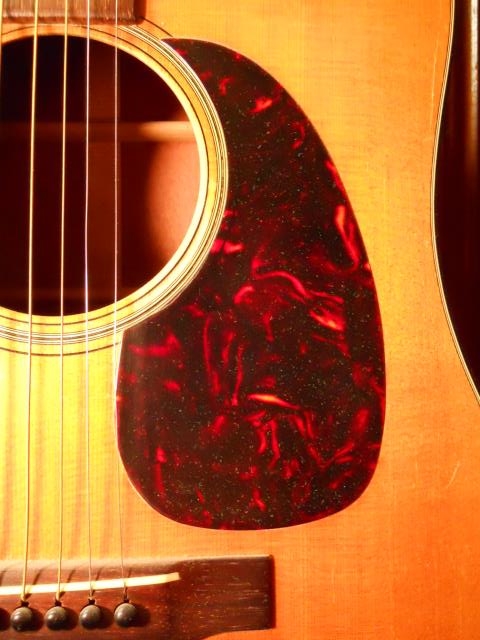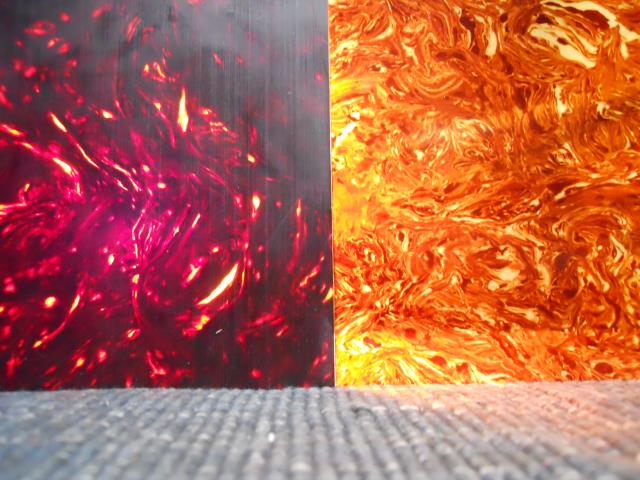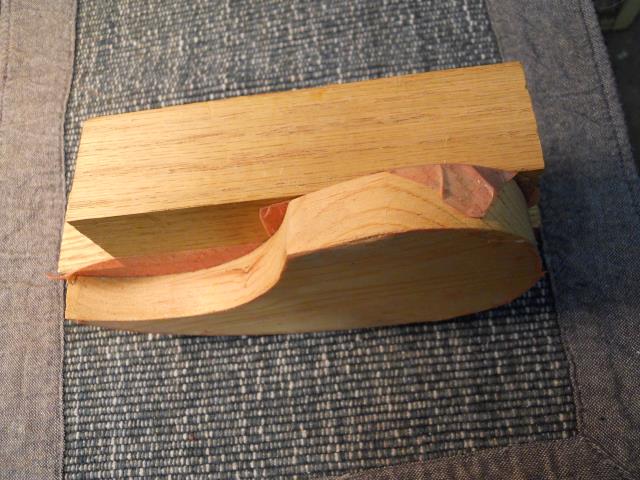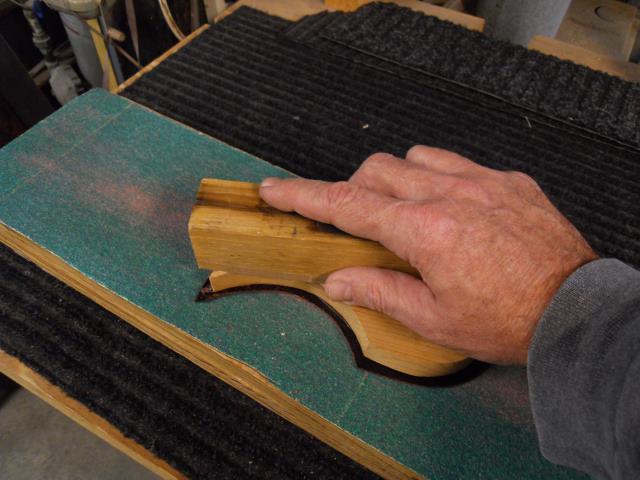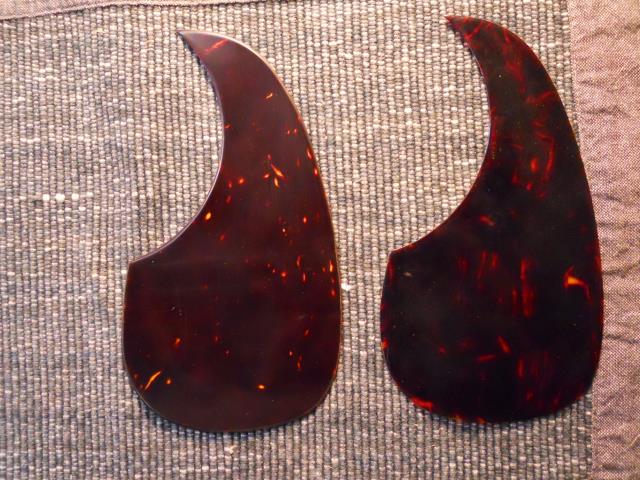|
| Repair Articles |
|---|
| Ask The Repairman |
| Repair Blue Book |
| Hardware Parts Accessories |
| Electronics |
| Guitar Wood and Kits |
| Tools |
| Friends |
|
|
|
|
|
Vintage Acoustic Guitar Dark Red Celluloid Reproduction Pickguard FabricationBy Steve Carmody c. 2015Many Martin and other flattop acoustic guitars built from, roughly, 1957 to around 1967 ( but there are other years), have a dark red ( v. brown) faux-tortoise celluloid pickguard. This is a 1963 D -18 with a dark red celluloid pickguard.
Brown celluloid and brown and red acetate pickguard material that is appropriately thicknessed for fabricating replacement pickguards for flattop guitars ( about .030) is widely available. But for some reason, suitably thicknessed dark-red celluloid pickguard material is not readily available. Many luthiers will just use the available brown celluloid material when replacing a dark-red celluloid pickguard. But for those seeking a more accurate reproduction pickguard for these guitars, there is another approach.
The Axiom company (http://www.axinc.net/category_s/47.htm) sells a dark red celluloid that has the spot-on color and faux-tortoise styling of the those pre-1967 Martin pickguards. They only make it available in a thickness of .070. This is great for an archtop guitar, but much too thick for a flattop. Here is how I bring the thickness of this pickguard material down to an appropriate size for use on flat top guitars: The first step is to fabricate a jig in the shape of the pickguard being replaced. It must be dead flat on the face. Then I attach a handle ( in this case two blocks of 2 inch x 2 inch oak) to the back of the jig.
I then cut the celluloid blank to the approximate size and shape ( slightly larger) of the jig, and, using two-sided tape, I attach it to the jig.
Then, also using two-sided tape, I attach .060 grit sandpaper to a rectangular sanding board constructed of two pieces of 3/4 inch thick plywood. Mine is approximately 24 inches long but the specific length is not critical.
Finally, the celluloid is sanded using the jig and sanding board, every so often removing the celluloid for measurement, until the desired thickness is reached, usually around .030. The critical point of attention is to apply even pressure to achieve an even thickness.
You might ask why I do this by hand, versus using a drum or other power sander. The reason is that celluloid and especially celluloid dust are highly flammable and potentially explosive. Hand sanding reduces the heat generated and dust scattered, and is therefore much safer. Even so, care must be taken any time celluloid is being worked with and a fire extinguisher should be within reach. Once the correct thickness is achieved the replacement pickguard is final shaped to fit the footprint of the original guard, then polished and installed. Which one is the original? One is from a 1967 00-21. I find that the entire process takes about 2- 3 hours, but the result is worth the effort.
NOTE: Red celluloid pickguard material in 2 thicknesses appropriate for acoustic guitar pickguards are now available from Paul Fox - https://fox-guitars.com/catalog/pickguard-materials
Steve Carmody is an independant guitar repairman and luthier with a shop in Silver Spring, Md. He has been doing guitar repair and restoration full-time since 1990. Questions about this article or anything else related to guitar repair? Send e-mail to - GuitarRepairShop@gmail.com |

